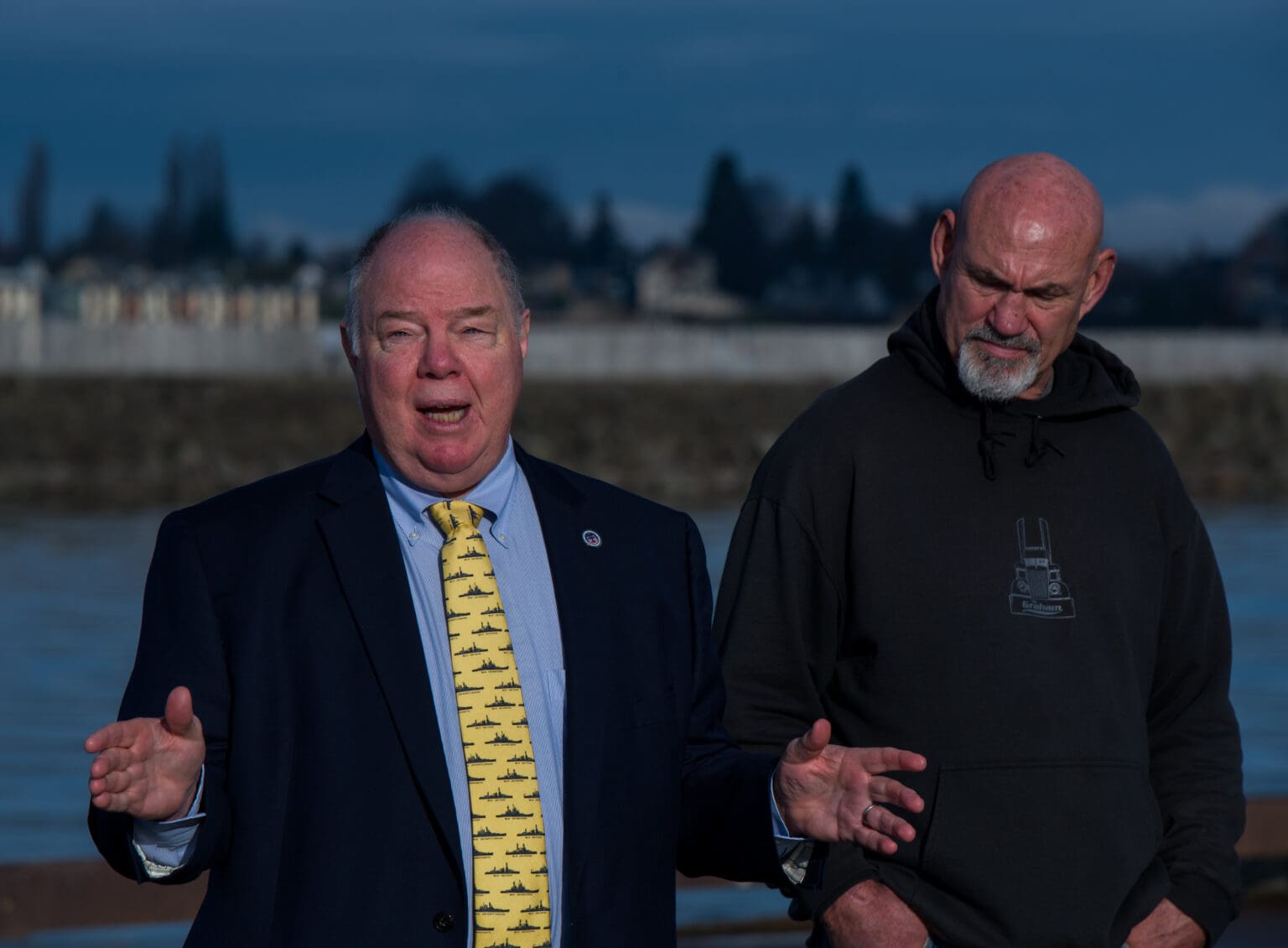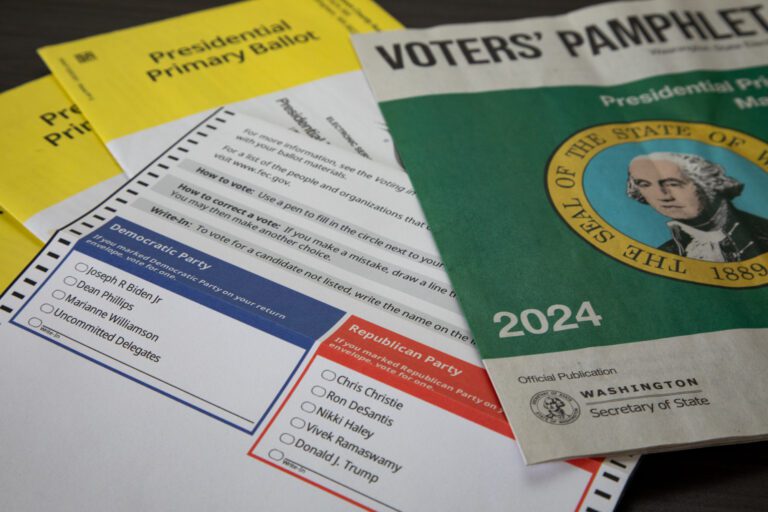Upgrades to Bellingham Shipping Terminal, commencing in January, will prime the waterfront for more shipping business, Port of Bellingham officials said.
During a tour of the terminal with a federal trade official on Wednesday, Dec. 20, local port representatives described a “modernization project” that should lure more vessel traffic to Bellingham. Design improvements also will reduce pollution in Whatcom Waterway, officials said.
The two-year project will cost $27.5 million. The port is covering this cost with the help of a $6.85 million federal grant.
“It is a big investment,” port Public Affairs Administrator Mike Hogan said. “The opportunity for working waterfront jobs is another big priority for the port.”
In a follow-up interview on Thursday, Hogan said the port had no estimate for how many new jobs would be created at the terminal after the improvements.
“The number of jobs and associated economic impact will be highly variable, depending on the type of cargo and frequency of shipment,” Hogan said.
He noted that Bellingham’s port isn’t deep enough to take container vessels, so materials coming off ships will not be packed inside containers — a type of cargo called “breakbulk.”
This could mean more jobs per cargo-pound than those found at larger ports in places like Seattle or Tacoma.
“In general, breakbulk cargo is much more labor intensive than containerized cargo,” Hogan said.
Next month, crews will dredge Whatcom Waterway along a portion of the terminal’s pier, to enable vessels to dock more efficiently. More dredging will happen next winter. The goal is to make room for a wider range of cargos, including cars and windmill parts, Hogan said.
The terminal’s deteriorating wharf will be replaced, enabling dockworkers to bring the port’s 157-foot crane boatside, to offload cargo. The port purchased the crane at a bargain-basement cost of $150,000 in 2021 but haven’t been able to do much with it yet.
Port Executive Director Rob Fix emphasized the environmental benefit of the modernization project. The new dock will be tilted slightly, to enable stormwater to run back toward the interior of the terminal area for treatment, rather than spilling into the waterway.
“Putting in state-of-the-art stormwater (treatment), it’s something Bellingham would do,” Fix said. “We want to protect the bay.”
During the tour, Max Vekich of the Federal Maritime Commission praised the port for preparing for increasing cargo demand nationwide.
“We’re going to need four times to 10 times what our cargo capacity was, (when it was) maxed out during the port congestion period of time,” Vekich said, referring to supply-chain backups during the COVID-19 pandemic.
“So we need to hold on to these ports and hold on to these places that have industrial lands,” Vekich added. “It’s really vital.”
The port signaled its commitment to industry and waterfront jobs by including union representatives on the tour: Northwest Washington Central Labor Council President Karl de Jong and Joe Schmidt of International Longshore and Warehouse Union Local 7.
Some Bellingham residents are likely to keep a wary eye on industrial developments at the waterfront.
Regarding the upcoming terminal improvements, Scott Jones, a founding member of Save the Waterfront, said he has no problem with “bringing in and exporting out traditional, port-type things,” including cars and the boulders being shipped from Bellingham to a jetty on the mouth of the Columbia River.
However, the group is challenging noisy scrap-metal loading operations at the shipping terminal as a heavy-industry use that shouldn’t have been allowed at the waterfront without an environmental review.
The group says heavy industry such as ABC Recycling’s scrap-metal pile could discourage job growth elsewhere on the waterfront, including a proposed waterfront hotel and retail area.
“We are absolutely not against light-industrial,” Jones said. “You can put so many more light-industrial jobs in that area that wouldn’t disturb the community, that are living-wage jobs, and everyone is happy. As long as it’s heavy-industrial, it’s no longer a win-win for the community.”
At a Bellingham City Council meeting in October, city Planning Director Blake Lyon said the zoning code lists vessel loading specifically as a light-industrial practice.
“When you look at heavy-industrial-type uses, there is some kind of processing, there is some kind of manufacturing component going along with it,” Lyon said, as opposed to simple stockpiling and loading.
This story was updated at 7:20 p.m. Thursday, Dec. 21 with more information about job estimates at the shipping terminal and what counts as a heavy-industrial use.




